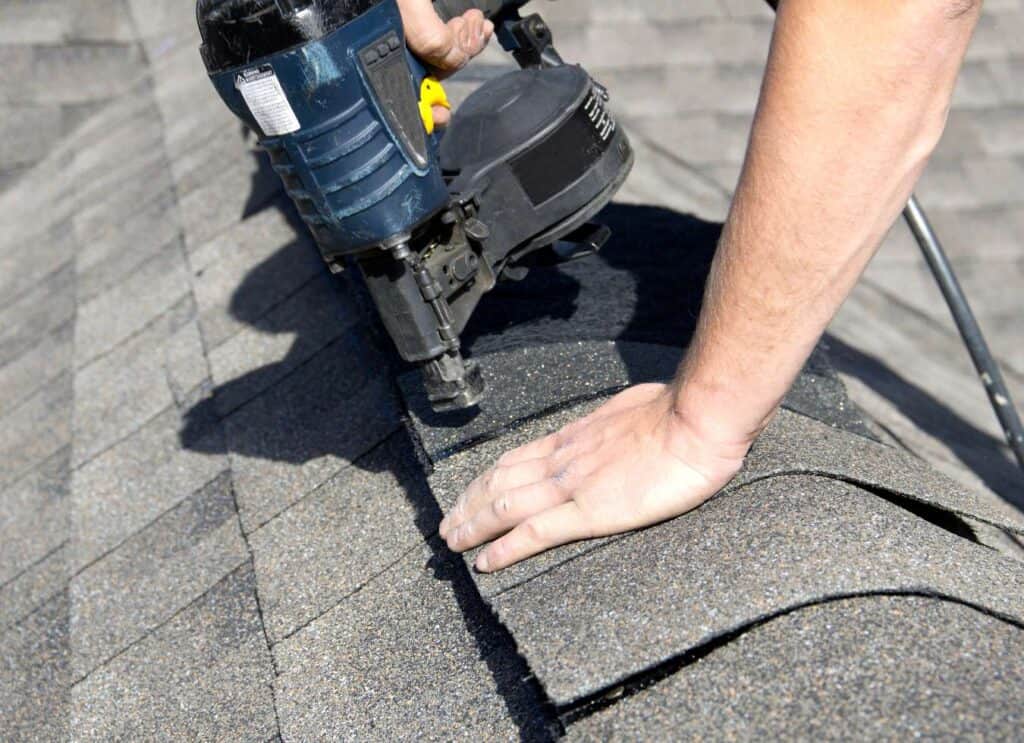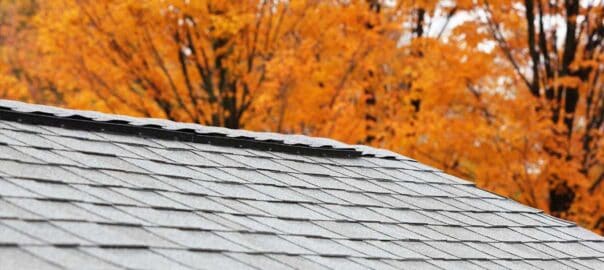Alright, Colorado homeowners, let’s discuss something that might seem too technical at first but is super important for the longevity of your roof. We’re talking about the magic of proper attic ventilation, specifically the dynamic duo of Ridge Vents and Deck Intake Vents. Yes, they may sound like superhero names straight out of a comic book, but trust us—these two roofing components will SAVE your roof from the forces of nature and age.
Now, before you roll your eyes and think, “What’s the big deal with ventilation? I just need a new roof,” let’s set the record straight: A well-ventilated attic isn’t just a “nice-to-have” feature—it’s a must-have if you want your roof to last as long as possible.
Ridge vents and deck intake vents help your roof breathe, and breathing is key to preventing all sorts of issues that can shorten the life of your roof, especially in places like the underside of the roof. Colorado, where the weather can be unpredictable, goes from scorching hot to freezing cold in hours during a regular day.
So, if you’re thinking about a roof replacement or upgrading your attic ventilation during a roof replacement, stick around. We’ve got some solid reasons why you should go for Ridge vent and deck intake vents over the traditional box vents or even whirlybird vents.

Buckle up—it’s time to get nerdy about roof ventilation!
1. What Are Ridge Vents and Deck Intake Vents, Anyway?
Before we dive into the nitty-gritty, let’s break it down:
- Ridge Vent: This vent runs along the peak (or ridge) of your roof. It’s the highest point of your roof, where the installed vent allows for optimal airflow. It allows hot air and moisture to rise naturally and escape from the attic, enhancing exhaust ventilation. Think of it as your roof’s personal exhaust fan.
- Deck Intake Vents: These vents are installed on your roof deck, around 2 to 3 feet above your soffits (the underside of the roof’s eaves). They act as the intake, allowing cool, fresh air to flow into the attic. This helps balance the airflow with the roof ridge vent and ensures there’s no stagnant air trapped up there, improving overall ventilation.
Together, these two types of vents create a continuous flow of air that helps regulate your attic’s temperature and moisture levels.
2. The Superpower of Ventilation: Prolonging Your Roof’s Life
Here’s the thing: your roof is constantly battling the elements. Whether it’s Colorado’s hailstorms, winter snow piling up, or summer’s blazing sun, your roof takes it all in stride. But without proper ventilation, heat and moisture can build up in your attic, which over time can seriously damage your roof and shorten its lifespan.
By installing Ridge Vent and Deck Intake Vents, you’re giving your roof an air circulation system that allows it to handle the weather like a pro. The best part? This keeps your roof from prematurely aging, cracking, or losing its effectiveness.
So, what are we actually talking about here regarding the importance of a gable vent? Let’s take a look at the issues Ridge Vents help prevent:
- Moisture Damage: When moisture gets trapped in your attic, it can lead to the formation of mold, which can be mitigated by adequate exhaust ventilation. Mold and rot—Yikes! Not only does this damage your roof structure, but it can also cause health problems if left unchecked. The balanced airflow provided by the combination of Ridge Vents and Deck Intake Vents helps keep your attic dry, reducing the risk of moisture buildup.
- Shingle Damage: If your attic is too hot, the temperature difference can cause your roof shingles to deteriorate faster. Think of it as putting your shingles in the correct position to complement the vent for your roof—an oven—not a good look. Ridge Vents ensure that heat escapes from your attic, which helps prevent shingles from curling, cracking, or becoming brittle. In essence, they keep the shingles from cooking from the inside out.
- Ice Dams: In Colorado, we know how harsh winters can be. If your attic isn’t ventilated properly, heat from the house can melt the snow on your roof, which refreezes at the edges, forming ice dams. These can cause major water damage when the ice melts and leaks into your home. Ridge Vent and Deck Intake Vents help maintain a balanced attic temperature, reducing the chances of ice dam formation.
3. Energy Savings: Let Your Roof Do the Work
While Ridge Vents and Deck Intake Vents are the MVPs when it comes to protecting your roof, they can also save you money. Here’s the deal: if your attic gets too hot in the summer (which happens when heat gets trapped with no way to escape), heat rises, so your air conditioning system has to work harder to cool down your home. Especially the bedrooms on the upper floor of your home.
By allowing proper ventilation with Ridge Vents, you’ll have a cooler attic, which in turn can help lower your cooling costs during the warmer months. So, not only are you giving your roof a longer life, but you’re also getting some sweet savings on your energy bills.
4. Better Air Quality in Your Home
Air quality matters, especially in Colorado, where the air can be dry. Proper vent systems help maintain a balanced environment in the attic, and the weather can change on a dime. Without the appropriate ventilation, stale air, moisture, and even odors can linger in your attic, leading to potential air quality issues inside your home. That’s where Ridge Vent and Deck Intake Vents come in handy.
These vents work together to promote healthy air circulation, ensuring that your attic—and by extension, your home—stays well-ventilated. You can breathe easy, knowing that you’re not letting moisture, heat, or unhealthy air build up in your attic, creating a more comfortable living environment.
5. Lower Risk of Roof Repair Costs
Having Ridge Vent and Deck Intake Vents in place can save you a ton of money on roof repairs down the road. You know that sinking feeling when you find out that you have to pay for a new roof after just a few years? One of the main reasons for early roof failure is the lack of ventilation. Without it, your roof is constantly battling extreme temperature fluctuations and moisture buildup, which can cause all sorts of damage that requires repairs or a complete roof replacement.
By installing Ridge Vents and Deck Intake Vents during your roof replacement, you’re investing in long-term roof protection. You’ll avoid the need for repairs and extend the life of your roof, which saves you time, money, and a lot of unnecessary stress.
6. No More Box Vents: The Superior Choice
Okay, we’ve all seen those box vents—usually in pairs that are dotted across the backside of your roof. While they’ve been the standard for years, box vents don’t have the same effectiveness or efficiency as Ridge Vents and Deck Intake Vents.
Box vents only allow air to escape at certain points, and often, they aren’t placed in ideal locations. They can overheat the attic, or worse, trap moisture in certain areas. That’s where the combination of Ridge Vents and Deck Intake Vents wins. These systems provide continuous, balanced airflow that covers every inch of the attic, ensuring that air circulates properly and no moisture or heat gets trapped.
In Colorado, where weather conditions can flip faster than a Rocky Mountain rollercoaster, Ridge Vents and Deck Intake Vents are your best bet for a roof that can stand up to whatever comes your way.
7. Easy Maintenance and Longevity
Another reason to opt for Ridge Vents and Deck Intake Vents is that they require minimal maintenance compared to other ventilation systems, like box vents. There’s no need to worry about cleaning out filters or dealing with the buildup of leaves and debris. As long as your Ridge Vents are installed properly, they’ll work year-round, and you won’t have to worry about maintenance issues.
8. Protect Your Roof’s Warranty
Most roofing manufacturers require proper attic ventilation as part of their warranty guidelines to ensure the appropriate installation of the vent systems.. If you don’t have the right ventilation, your warranty could be voided, which means that any future damage won’t be covered. So, Ridge Vents and Deck Intake Vents improve your roof’s health and protect your roof by ensuring proper ventilation and extending your roof’s lifespan. Warranty.

Other Popular Questions Related to Roof Systems and Roof Vents
Q: Why is proper attic ventilation important for roof longevity?
A: Proper attic ventilation is important because it helps regulate temperature and moisture levels in the attic space. This prevents damage to roofing materials, reduces energy costs, and extends the roof lifespan by allowing air to escape from the attic.
Q: How do ridge vents work to improve roof health?
A: Ridge vents work by allowing hot, moist air to rise and escape from the attic through the roof’s peak. This adequate ventilation reduces the risk of mold, mildew, and other issues that can compromise roof health and the function of the installed vent.
Q: What are the benefits of installing a ridge vent?
A: Installing a ridge vent provides balanced ventilation by allowing hot air to escape from the attic while drawing in cooler air through intake vents like soffit vents. This helps maintain a stable attic environment, reducing energy costs and extending the roof’s lifespan.
Q: What is the role of intake and exhaust vents in roof ventilation systems?
A: Intake and exhaust vents work together to create a vertical ventilation system. Intake vents, such as soffit vents, allow fresh air to enter the attic, while exhaust vents, like ridge vents, allow hot air to escape, ensuring proper roof ventilation.
Q: Can different types of roof designs affect attic ventilation?
A: Yes, different types of roof designs can affect how ventilation systems are installed and function. The type of roof will determine the best placement and combination of intake and exhaust vents to ensure effective attic ventilation.
Q: How does poor ventilation impact roofing materials?
A: Poor ventilation can lead to excessive heat and moisture buildup in the attic, which can damage roofing materials like shingles. This can result in premature aging, warping, and deterioration, ultimately shortening the roof’s lifespan.
Q: What should be considered during ridge vent installation?
A: During ridge vent installation, it’s important to ensure that the ridge vent is cut correctly into the roof and that adequate intake ventilation supports balanced airflow. Proper installation helps maximize the vent’s effectiveness and extend your roof’s lifespan.
Q: How do soffit vents contribute to proper roof ventilation?
A: Soffit vents contribute to proper roof ventilation by allowing cooler, fresh air to enter the attic space. This intake ventilation is crucial for maintaining a balanced system where hot air can effectively escape through exhaust vents like ridge vents.
Q: What are the signs of inadequate attic ventilation?
A: Signs of inadequate attic ventilation include excessive heat in the attic space, increased energy costs, visible mold or mildew, and premature aging of roofing materials. Proper ventilation helps extend the roof’s lifespan.

Final Thoughts: Ventilation Is Key for a Long-Lasting Roof
If you’re replacing your roof, don’t overlook the importance of proper attic ventilation. Installing Ridge Vents and Deck Intake Vents during your roof replacement will help extend the life of your roof, improve energy efficiency, reduce moisture damage, and protect your home’s air quality. Plus, you’ll avoid costly repairs down the road.
Here at Denny’s Roofing, we know that a well-ventilated attic is key to the health of your roof—and your wallet. If you’re ready to make the smart choice for your home and roof, call us today! We’ll help you choose the best ventilation system for your roof and ensure your home stays protected, comfortable, and energy-efficient for years to come.
Let your roof breathe easy—install Ridge Vents and Deck Intake Vents with Denny’s Roofing!

